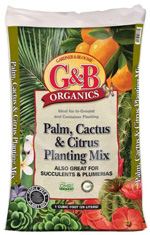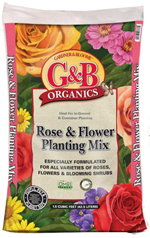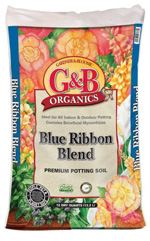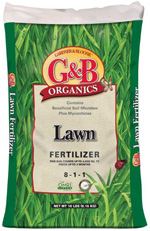|

|
 |
Featured Quote: "God made rainy days so gardeners could get the housework done." |

|

|
|
Happy Father's Day To
All The Awesome Dads And Grandads Out There Don't Forget Our H&H Gift Card To Treat Dad With! |
 |
|
Spice up your Father's Day festivities with an activity or two.
Plant a fruit tree together. We suggest giving Dad a cool one in his easy chair and letting him see you sweat for a change, while you install a wonderful fruit tree. We recommend fertilizing monthly and spraying as needed with organic pesticides. Dad will be able to enjoy your tree and its fruit year after year. Be sure to interview your father and/or grandfather. Ask questions about his birth, childhood, and what he did when he was a teenager. Find out favorite subjects in school, how he met your mother or grandmother. Inquire about his favorite job. End the interview by expressing your love for him. Get together with a few other families and play the Father/Child Game. Divide into four father/child teams. Ask the fathers to leave the room while the children sit in chairs. Ask the same four or five questions to each child about their fathers. Bring in the fathers and ask them the same questions. Will the father and child have the same answers? Switch places and see how well the fathers know the children. Award a red rose to the winning father/child team. Question Ideas: Favorite color, movie, candy bar, color of toothbrush, memorable moment with you, best friend, hobby, talent, food, animal, cartoon, pizza topping, ice cream topping, restaurant. Most embarrassing moment. Favorite holiday. Have a Father's Day BBQ or picnic in your garden. Make a crown for dad and let him know he's "King" for the day. This can be a family activity--or extend an invitation to a few other families also. Make sure all the dads are given "The Royal Treatment." |
Click to print this article.
 |
|
Do your last thinning on deciduous fruit trees after June drop, nature's way of getting rid of an overload of fruit. It may occur any time between early May and July but is most likely to happen in June. One day you visit your apple, peach or apricot tree and find a circle of immature fruit lying on the ground under the branches. You may worry if you are new to fruit trees, but don't panic! It's a natural part of the cycle. These trees often set more than double the amount of fruit they could possibly ripen properly, so they simply drop off part of it. If you thinned out fruit on your trees earlier, you enabled the remaining fruit to grow larger and thus will have less fruit dropping now. Nevertheless, you may need to remove even more fruit than naturally drops in order to space your crop evenly down the branches. Inspect other deciduous fruit trees that are less subject to June drop (plums, for instance) and thin out their fruits also. Clean up any fallen fruit under the tree before it has a chance to rot and spread disease. If it's healthy, chop it and add it to your compost pile (cover it with earth to keep away flies and rodents). Also water your deciduous fruit trees deeply in June and July. |
How to Make Cut Hibiscus Flowers Stay Open at Night |

|
|
Pick blossoms just as they're barely open at 9 or 10 am, and slip each one into an empty Sno-Cone cup to protect it. (Pick them right under the flower rather than at the base of the stem in order not to tear the bark.) Put the Sno-Cone cups containing the flowers in a plastic bag and place them in the refrigerator for the day. Take the flowers out in the evening. They'll stay open all night without water. Because water is not needed, you can use these methods to arrange them. Spear the blossoms on toothpicks, and stick the toothpicks into arrangements. Or, to use the flowers in vases, spear them on long bamboo barbeque skewers and arrange the skewers. Or instead of the stiff bamboo skewers substitute the center veins of fronds cut from a pygmy date palm (Phoenix roebelenii). Cut off the individual leaflets from each vein so it becomes a bare stem before spearing a flower with its sharp tip. Your hibiscus will be transformed into cut flowers with long, graceful, arching stems. |

|
There is a growing trend in home entertaining in presenting food that is not only delicious but also beautiful to look at. What better way to beautify your company dishes than with fresh flowers from your garden that not only look pretty but are edible as well? Summer is the best season to incorporate flowers in your food preparation because the variety and supply are plentiful. Before you begin, make sure that all edible flowers have not been sprayed or chemically fed. Always use organic fertilizers and spray for fungus and pests with organics to control problems. Any garden, no matter how small, can provide a wonderful supply of summer blooms for culinary use. Here is a list of some to start collecting and growing: Nasturtiums: almost a never-ending supply of beautiful flowers in hot summer colors. Lovely in salads and they provide a nice peppery taste (see recipe below). Marigolds: a great addition to salads and as garnishes or used in sauces (see recipe below). Rosemary, Marjoram and Thyme: all have beautiful flowers that are as useful as their leaves. Their flowers adorn and flavor your favorite fish and chicken recipes. Roses: use the petals in fresh salads, to flavor summer puddings (add petals on the outer edge of a glass serving dish before spooning pudding), decorate cakes with fresh roses and season olive oil and vinaigrette dressings with fresh petals. Society Garlic: delicious garlic flavor in both stems and flowers. Flowers look pretty and add spicy garlic flavor to roasted meats and broiled fish. Snip stems and use as a chive substitute on baked or mashed potatoes. Scented Geraniums: leaves are wonderful in preserves and jellies; the flowers when harvested and dried make soothing and refreshing teas. Nasturtium Summer Salad Mixed lettuce leaves Dressing 2 tablespoons olive oil Toss the flowers gently with the lettuce leaves. You can also add candied walnuts, chopped apples or mandarin oranges. Shake the dressing together and mix with the salad just before serving. Serves 6. Marigold Sauce 4 tablespoons cider vinegar Measure the cider vinegar into a mixing bowl, add the grated horseradish and crush well with a wooden spoon. Blend in the sunflower oil and leave to infuse for 30 minutes. Wash the marigold flowers and drain well. Stir the marigold petals into the sauce. Serve this sauce with smoked mackerel or herring on a bed of fresh red lettuce leaves and marigold petals for color. |

|
By Tamara Galbraith When it's summertime and you're working on a tan, your plants may begin to take on a pale, pasty look. What gives? Say hello to the fungus disease known as powdery mildew. 
A common condition found on plant life throughout North America, powdery mildew is characterized by spots or patches of white to grayish talcum-powder-like growth. Fortunately, it is usually more of an effect than a problem itself. In other words, in addition to treating the plant, you'll probably want to take a look at the surrounding conditions and make some adjustments. The primary way to keep powdery mildew (and other fungi) from attacking your plants is prevention. Start now. First and foremost, make sure you give plants plenty of room. Good air circulation goes a long way. Trim plants that get crowded or bushy. Avoid overhead watering and do your watering in the morning so any water that does get on leaves has a chance to dry. If your plants are getting spray from a lawn sprinkler system, try moving the sprinkler a bit further away. If that's not possible, you might consider replacing your plants with more mildew-resistant plants or varieties. If you do get powdery mildew, to halt it in its tracks, spray the affected plants with a good fungicide. |
 |
|
How often should I cut my lawn? Answer: Following the one-third rule will produce smaller clippings that will disappear quickly by filtering down to the soil surface. If the grass becomes too tall between mowings, raise the mowing height and then gradually reduce it until the recommended height is reached. For the best appearance, mow and maintain your lawn at the best height for growth as determined by the type of grass you have. You can usually mow a grass that spreads horizontally shorter than an upright-growing bunch-type grass. Grasses with narrow blades can generally be mowed closer than grasses with wide blades. If your lawn is under stress--such as heat, drought or shade--mow at a higher level of cut. Proper mowing is important in maintaining a healthy lawn because it encourages a dense stand of grass plants. A dense turf keeps out weeds through competition for sunlight and nutrients. A weak, thin turf allows weed seeds to germinate and grow. Mowing practices can also affect the occurrence of disease. Many times an increase in disease can occur when turf is cut too low or is mowed when the foliage is wet. One final tip: Don't mow in the same direction each time. Alternate your mowing direction and you'll have more upright grass growth and a smoother-looking lawn. |

| What You'll Need:
Step by Step:
Yield: 4 servings |
 click here for a printer friendly version of this page
click here for a printer friendly version of this page |
Written content © 2004-2014 Garden Partners LLC, or respective authors. All Rights Reserved. Privacy Policy. All written content contained in this site is protected by United States copyright law and may not be reproduced, distributed, transmitted, displayed, published, or broadcast without prior written permission of Garden Partners, LLC. You may not alter or remove any trademark, copyright or other notice from copies of the content. Would you like a newsletter like this for your nursery or garden center? Please feel free to look at what we have to offer and contact us for your garden center marketing solutions. |









